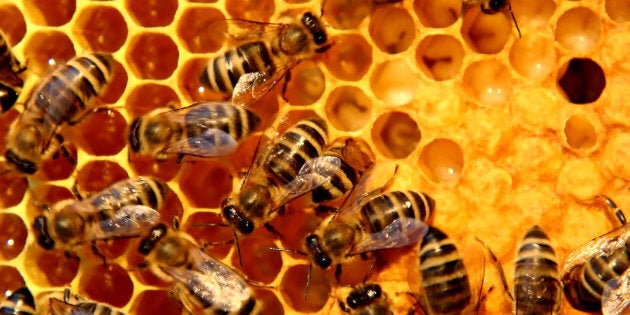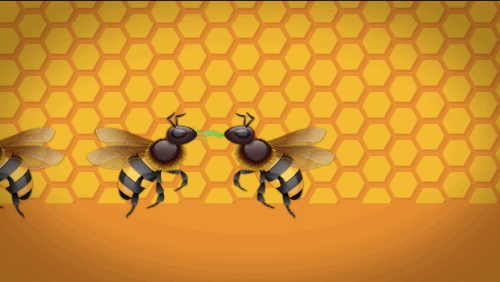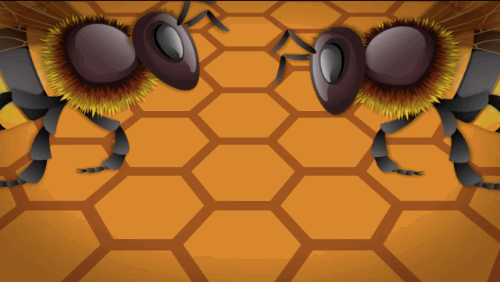
Bees make honey.
For many of us, that’s the extent of our honey knowledge. The thing is, there’s something you should know: honey is made from regurgitated flower nectar. We’re not trying to ruin honey for you, just like we weren’t trying to ruin figs when we explained there are dead wasps inside them. But honey is essentially bee vomit, depending on your definition of vomit (and yes, different experts have different ideas of what qualifies as vomit).
As gross as that sounds, the way bees make honey is actually an amazing process. Bees collect nectar from flowers and they store it in their honey stomach, also known as the crop. Bees have another stomach, the ventriculus, for the food they eat and digest. In between the crop and their digestive stomach is the proventriculus, which not only feeds the bee’s digestive stomach nectar and pollen from the crop, but also ensures that the nectar in the crop never gets contaminated with the contents of the ventriculus.
Once at the hive, the forager bees regurgitate the nectar from their honey crop into a processor bee’s mouth.

That processor bee then stores the nectar in its honey crop and regurgitates it to a bee that’s closer to the honeycomb for storage. So, honey is really the vomit of many bees combined.
During the collection and regurgitation process, the nectar is mixed with an enzyme in the bee that changes the chemical composition and pH of the nectar, making it better for long-term storage. Bees make honey as food to survive the winter months, so making it “shelf stable” is important.
After the bees store the honey into a comb ―and the vomiting finally stops ― they fan the nectar with their wings in order to make the excess water in the nectar evaporate.

Between the addition of enzymes and the fanning, bees are able to reduce the water content of nectar from 70 percent to 18.6 percent. That reduction of water is what protects the bee’s winter stash from microbes.
Once stored in the comb, the honey is sealed with wax produced by the glands of the bees, and that’s when we get our hands on it.
There is some disagreement about whether or not honey is technically bee vomit. It comes down to how one interprets the word vomit. Some say that honey is definitely not vomit because the nectar was not digested and because it’s voluntarily regurgitated. But those folks base their decision off Wikipedia definitions. If you look at the Merriam-Webster definition, vomit is an act or instance of disgorging the contents of the stomach through the mouth.
So, yes, under that definition, honey is bee vomit. But it still tastes great on toast.
PBS agrees that honey is bee vomit, and they know a lot about bees. Watch this video below for everything you ever wanted to know about honey bees ― and more.
